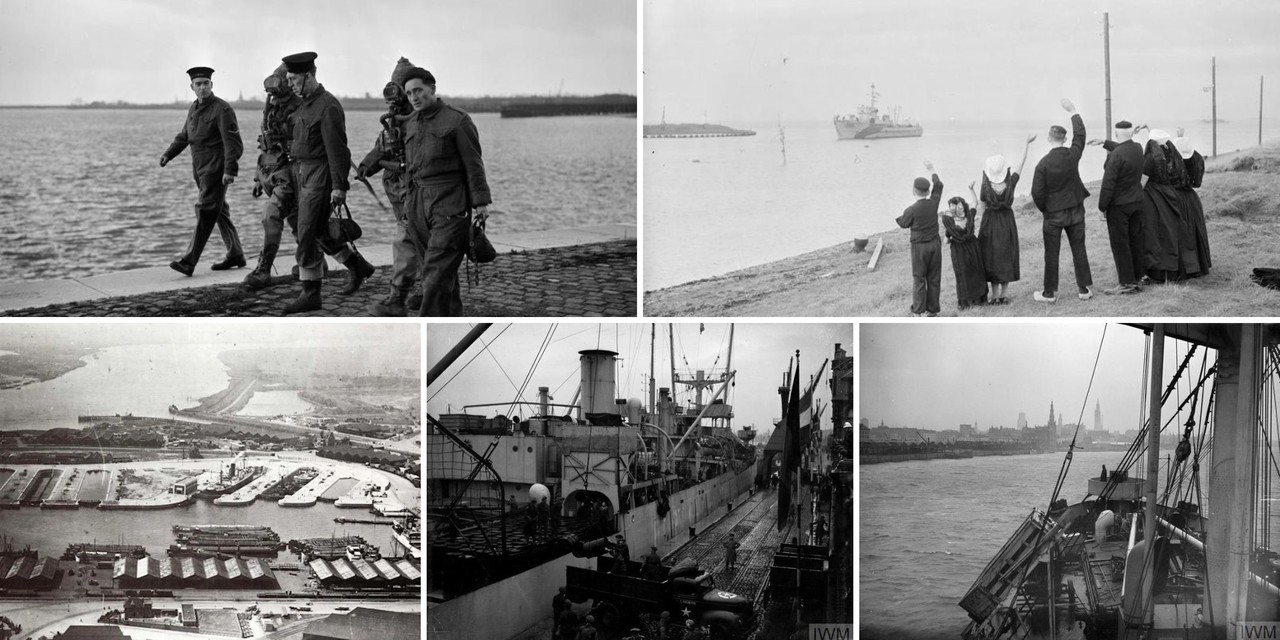The Battle of the Scheldt from 2 October to 8 November 1944 was crucial in clearing the Scheldt Estuary from German forces to secure the Allies’ access to the North Sea. The rapid advance across Normandy and Belgium in the summer of 1944 presented the Western forces with the challenge that they lacked an operational deep-sea harbour through which they could transport urgently needed supplies. Many soldiers lost their lives during the battle, which was fought in the Belgian and Dutch provinces of Flanders, Zeeland and Brabant, and the civilian population suffered immensely due to the fighting and the bombings.
The city of Antwerp had already been captured by Allied forces on 4 September 1944 with its deep-sea port intact. However, to solve the supply problems, the Allied nations needed to gain access to the North Sea, to facilitate material provisioning and personnel reinforcements. At this point, the canals, rivers, and waterways around Antwerp toward the North Sea, including the 95-kilometre-long Western Scheldt, were still in German hands.
Gaining full access to the port of Antwerp was essential, because the city and port of Rotterdam had been heavily bombed in 1940 during the Nazi’s invasion of the Netherlands. Additionally, the artificial Mulberry Harbour off the coast of Arromanches-les-Bains in Normandy, which was working above its capacity, had already been left far behind by the Allied troops in their advance along the Western Front. Despite some smaller French port cities being liberated since D-Day (6 June 1944), the Allies needed another major port to ensure adequate supplies for their troops throughout the coming winter months.
Clearing the Scheldt Estuary
The First Canadian Army under the leadership of Lieutenant-General Guy Simonds was responsible for this great battle, while American and British troops had led Operation Market Garden (17 to 25 September 1944), the attempted advance into the Netherlands across the Lower Rhine River. The unsuccessful execution of this operation caused a delay in the battle for the Scheldt, which gave the German Wehrmacht time to reinforce their defences and personnel along the Scheldt Estuary.
The clearing of this strategic area took the Canadian, British, Polish, US-American, Belgian, Dutch, Free French and Norwegian units several weeks. The strong defence facilities, called the German Atlantic Wall, in combination with the fierce resistance of dug-in German troops made it hard for the Allies to obtain the upper hand over the region’s various islands and riverbanks.
Poor battle conditions
Bad, rainy weather resulting in muddy ground made the fighting unbearable and seemingly hopeless at times. In numbers, however, the Allies were stronger than the Germans. Roughly 135,000 Allied soldiers faced some 90,000 battle-hardened Wehrmacht troops. The British Royal Air Force strategically breached some dykes to weaken the Nazi defences, causing inundations and facilitating the use of amphibious vehicles.
The Battle of the Scheldt was one of the largest and bloodiest battles of the Second World War on Belgian and Dutch soil. Numerous amphibious assaults, obstacle crossings and attacks over open ground made the Allied soldiers vulnerable to hostile fire. Despite taking more than 40,000 prisoners, and clearing the Scheldt Estuary as ordered, the Allies sustained heavy losses. Almost twenty-one thousand Allied soldiers (among them over six thousand Canadians) lost their lives during these weeks.
Supplying the Allied advance
Clearing the port of mines after its capture took another three weeks, with the first Allied supply ships finally landing in Antwerp on 29 November 1944. This reinforcement was sorely needed for the further advance through the Netherlands into Germany and for the Battle of the Bulge, also known as the Ardennes Offensive, which was imminent in the winter of 1944/45 (16 December 1944 to 28 January 1945). Between November 1944 and the end of the Second World War in Europe (8 May 1945), 2.5 million tons of supplies arrived through the port of Antwerp, which were critical for finally defeating the German troops.
